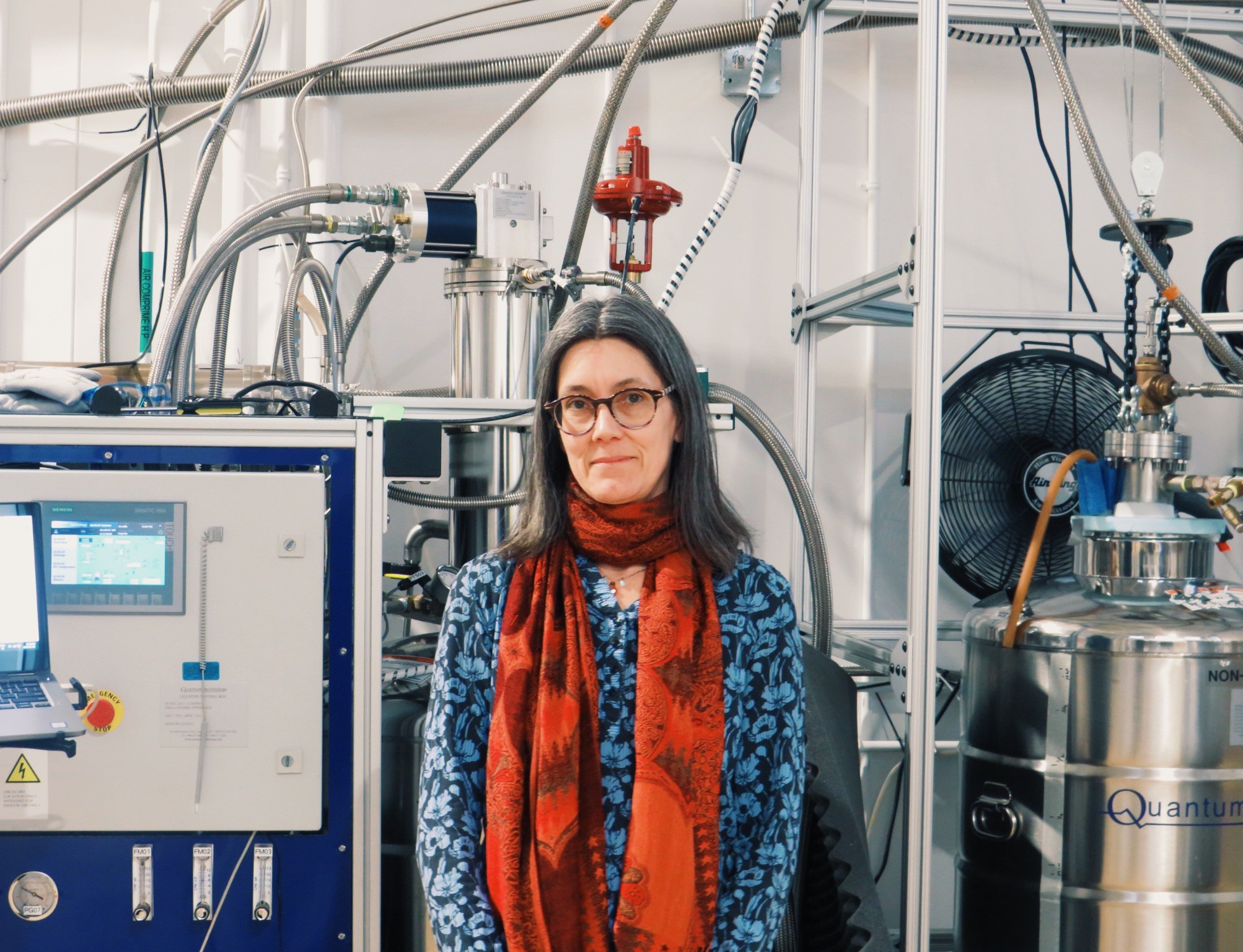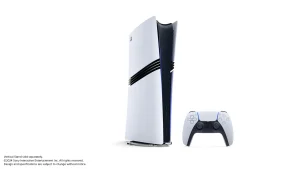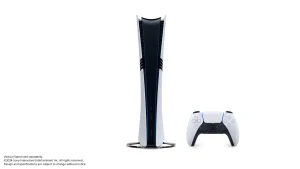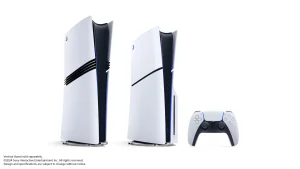Tech
Sustainability in research: The Nuclear Magnetic Resonance lab on finding creative solutions

Helium is probably not the first thing that comes to mind for most people when they think about recycling – unless they’re experimental chemists working in McGill’s Nuclear Magnetic Resonance (NMR) facilities.
Chemists, biochemists, and other researchers use NMR spectrometers to learn more about the atomic structure of a molecule or material they have synthesized or isolated. Similar to an MRI, a small sample is placed inside a very strong magnet, where signals are generated to provide information about the sample’s structure, purity, and other characteristics. To create this magnetic field, electrons flow through a superconducting wire, which must be continually immersed in liquid helium at a temperature of 4 Kelvin (-269 C). Over time, the liquid helium evaporates and needs to be replenished at regular intervals.
In response to the rising price of helium in 2018, Tara Sprules, PhD, and Robin Stein, PhD, began searching for ways to lower the cost of maintaining the eight NMR spectrometers in their facilities. This is when they learned about helium recycling systems. In 2020, the NMR lab partnered with the Sustainability Projects Fund (SPF) to install a helium recovery system in their laboratory with the goal of reducing how much of this precious resource they purchased and wasted. It is now estimated that the lab recycles between 80 per cent and 90 per cent of the liquid helium it uses.
In conversation with the Office of Sustainability, NMR Researcher and Facility Manager Tara Sprules reflected on how her lab had to think outside the box when it came to being more sustainable.
Why was recycling helium at the NMR lab a priority for you?
We often think about recycling plastic and trying to minimize disposable materials as obvious first steps in the lab. Few people immediately jump in and think of recycling gas, but the reality is that it’s quite effective. And since extracting and storing helium is very resource intensive, recycling it is both financially and environmentally sustainable.
Liquid helium is actually a crucial resource in a lot of fields, not just chemical research. It’s used a lot in semiconductor research and for MRI imaging in hospitals. In industrial settings, people can usually afford to buy more helium, but in universities and hospitals it’s not always so simple. So, this type of recovery system has important applications beyond just chemistry labs, for healthcare and technology.
Have you noticed a shift in how people think about sustainability in laboratory settings?
I think the projects being worked on now really show that there are a lot of ways you can be sustainable beyond what feels immediately obvious. It’s nice to see all the creative actions being incorporated to try to make research more sustainable. It’s tough with chemistry because you can’t just rinse out and reuse your beaker. You have to make sure it’s not at all contaminated. But I think the work being done by members of the Green Labs Initiative at McGill to sanitize glass systems and recycle plastics is really neat and hopefully will be helpful for units who use a lot of these materials.
What advice would you give to other laboratories for how to make their research more sustainable?
I would say to keep an open mind and reach out to the scientific community. I know it’s unnerving to make changes to these critical and expensive instruments. In our case, we definitely had concerns that hooking up a helium recovery system to these very delicate instruments could transmit vibrations and affect a researcher’s measurements. The way that we pushed through our hesitation was by talking to other people around the world who were already doing this successfully.
So, as much as possible, try to reach out to other people with similar problems and see how they’ve addressed them. I don’t think we would have gotten this far without having that support. And the best part is this community of support is only getting bigger and bigger.
To help your lab implement more sustainable practices, consult the Sustainable Labs Guide and sign your lab up for the International Freezer Challenge. Additionally, any student, staff, or faculty member can apply to the Sustainability Projects Fund to support their lab’s green transition.

Tech
How to Preorder the PlayStation 5 Pro in Canada

Sony has made it easy for Canadian consumers to preorder the PlayStation 5 Pro in Canada directly from PlayStation’s official website. Here’s how:
- Visit the Official Website: Go to direct.playstation.com and navigate to the PS5 Pro section once preorders go live on September 26, 2024.
- Create or Log in to Your PlayStation Account: If you don’t have a PlayStation account, you will need to create one. Existing users can simply log in to proceed.
- Place Your Preorder: Once logged in, follow the instructions to preorder your PS5 Pro. Ensure you have a valid payment method ready and double-check your shipping information for accuracy.
Preorder Through Major Canadian Retailers
While preordering directly from PlayStation is a popular option, you can also secure your PS5 Pro through trusted Canadian retailers. These retailers are expected to offer preorders on or after September 26:
- Best Buy Canada
- Walmart Canada
- EB Games (GameStop)
- Amazon Canada
- The Source
Steps to Preorder via Canadian Retailers:
- Visit Retailer Websites: Search for “PlayStation 5 Pro” on the website of your preferred retailer starting on September 26.
- Create or Log in to Your Account: If you’re shopping online, having an account with the retailer can speed up the preorder process.
- Preorder in Store: For those who prefer in-person shopping, check with local stores regarding availability and preorder policies.
3. Sign Up for Notifications
Many retailers and websites offer the option to sign up for notifications when the preorder goes live. If you’re worried about missing out due to high demand, this can be a useful option.
- Visit Retailer Sites: Look for a “Notify Me” or “Email Alerts” option and enter your email to stay informed.
- Use PlayStation Alerts: Sign up for notifications directly through Sony to be one of the first to know when preorders are available.
4. Prepare for High Demand
Preordering the PS5 Pro is expected to be competitive, with high demand likely to result in quick sellouts, just as with the initial release of the original PS5. To maximize your chances of securing a preorder:
- Act Quickly: Be prepared to place your order as soon as preorders open. Timing is key, as stock can run out within minutes.
- Double-Check Payment Information: Ensure your credit card or payment method is ready to go. Any delays during the checkout process could result in losing your spot.
- Stay Informed: Monitor PlayStation and retailer websites for updates on restocks or additional preorder windows.
Final Thoughts
The PlayStation 5 Pro is set to take gaming to the next level with its enhanced performance, graphics, and new features. Canadian gamers should be ready to act fast when preorders open on September 26, 2024, to secure their console ahead of the holiday season. Whether you choose to preorder through PlayStation’s official website or your preferred retailer, following the steps outlined above will help ensure a smooth and successful preorder experience.
For more details on the PS5 Pro and to preorder, visit direct.playstation.com or stay tuned to updates from major Canadian retailers.
Tech
Introducing the PlayStation 5 Pro: The Next Evolution in Gaming

Since the PlayStation 5 (PS5) launched four years ago, PlayStation has continuously evolved to meet the demands of its players. Today, we are excited to announce the next step in this journey: the PlayStation 5 Pro. Designed for the most dedicated players and game creators, the PS5 Pro brings groundbreaking advancements in gaming hardware, raising the bar for what’s possible.
Key Features of the PS5 Pro
The PS5 Pro comes equipped with several key performance enhancements, addressing the requests of gamers for smoother, higher-quality graphics at a consistent 60 frames per second (FPS). The console’s standout features include:
- Upgraded GPU: The PS5 Pro’s GPU boasts 67% more Compute Units than the current PS5, combined with 28% faster memory. This allows for up to 45% faster rendering speeds, ensuring a smoother gaming experience.
- Advanced Ray Tracing: Ray tracing capabilities have been significantly enhanced, with reflections and refractions of light being processed at double or triple the speed of the current PS5, creating more dynamic visuals.
- AI-Driven Upscaling: Introducing PlayStation Spectral Super Resolution, an AI-based upscaling technology that adds extraordinary detail to images, resulting in sharper image clarity.
- Backward Compatibility & Game Boost: More than 8,500 PS4 games playable on PS5 Pro will benefit from PS5 Pro Game Boost, stabilizing or enhancing performance. PS4 games will also see improved resolution on select titles.
- VRR & 8K Support: The PS5 Pro supports Variable Refresh Rate (VRR) and 8K gaming for the ultimate visual experience, while also launching with the latest wireless technology, Wi-Fi 7, in supported regions.
Optimized Games & Patches
Game creators have quickly embraced the new technology that comes with the PS5 Pro. Many games will receive free updates to take full advantage of the console’s new features, labeled as PS5 Pro Enhanced. Some of the highly anticipated titles include:
- Alan Wake 2
- Assassin’s Creed: Shadows
- Demon’s Souls
- Dragon’s Dogma 2
- Final Fantasy 7 Rebirth
- Gran Turismo 7
- Marvel’s Spider-Man 2
- Ratchet & Clank: Rift Apart
- Horizon Forbidden West
These updates will allow players to experience their favorite games at a higher fidelity, taking full advantage of the console’s improved graphics and performance.






Design & Compatibility
Maintaining consistency within the PS5 family, the PS5 Pro retains the same height and width as the original PS5 model. Players will also have the option to add an Ultra HD Blu-ray Disc Drive or swap console covers when available.
Additionally, the PS5 Pro is fully compatible with all existing PS5 accessories, including the PlayStation VR2, DualSense Edge, Pulse Elite, and Access controller. This ensures seamless integration into your current gaming setup.
Pricing & Availability
The PS5 Pro will be available starting November 7, 2024, at a manufacturer’s suggested retail price (MSRP) of:
- $699.99 USD
- $949.99 CAD
- £699.99 GBP
- €799.99 EUR
- ¥119,980 JPY
Each PS5 Pro comes with a 2TB SSD, a DualSense wireless controller, and a copy of Astro’s Playroom pre-installed. Pre-orders begin on September 26, 2024, and the console will be available at participating retailers and directly from PlayStation via direct.playstation.com.
The launch of the PS5 Pro marks a new chapter in PlayStation’s commitment to delivering cutting-edge gaming experiences. Whether players choose the standard PS5 or the PS5 Pro, PlayStation aims to provide the best possible gaming experience for everyone.
Preorder your PS5 Pro and step into the next generation of gaming this holiday season.
Tech
Google Unveils AI-Powered Pixel 9 Lineup Ahead of Apple’s iPhone 16 Release
Google has launched its next generation of Pixel phones, setting the stage for a head-to-head competition with Apple as both tech giants aim to integrate more advanced artificial intelligence (AI) features into their flagship devices. The unveiling took place near Google’s Mountain View headquarters, marking an early debut for the Pixel 9 lineup, which is designed to showcase the latest advancements in AI technology.
The Pixel 9 series, although a minor player in global smartphone sales, is a crucial platform for Google to demonstrate the cutting-edge capabilities of its Android operating system. With AI at the core of its strategy, Google is positioning the Pixel 9 phones as vessels for the transformative potential of AI, a trend that is expected to revolutionize the way people interact with technology.
Rick Osterloh, Google’s senior vice president overseeing the Pixel phones, emphasized the company’s commitment to AI, stating, “We are obsessed with the idea that AI can make life easier and more productive for people.” This echoes the narrative Apple is likely to push when it unveils its iPhone 16, which is also expected to feature advanced AI capabilities.
The Pixel 9 lineup will be the first to fully integrate Google’s Gemini AI technology, designed to enhance user experience through more natural, conversational interactions. The Gemini assistant, which features 10 different human-like voices, can perform a wide array of tasks, particularly if users allow access to their emails and documents.
In an on-stage demonstration, the Gemini assistant showcased its ability to generate creative ideas and even analyze images, although it did experience some hiccups when asked to identify a concert poster for singer Sabrina Carpenter.
To support these AI-driven features, Google has equipped the Pixel 9 with a special chip that enables many AI processes to be handled directly on the device. This not only improves performance but also enhances user privacy and security by reducing the need to send data to remote servers.
Google’s aggressive push into AI with the Pixel 9 comes as Apple prepares to unveil its iPhone 16, which is expected to feature its own AI advancements. However, Google’s decision to offer a one-year free subscription to its advanced Gemini Assistant, valued at $240, may pressure Apple to reconsider any plans to charge for its AI services.
The standard Pixel 9 will be priced at $800, a $100 increase from last year, while the Pixel 9 Pro will range between $1,000 and $1,100, depending on the model. Google also announced the next iteration of its foldable Pixel phone, priced at $1,800.
In addition to the new Pixel phones, Google also revealed updates to its Pixel Watch and wireless earbuds, directly challenging Apple’s dominance in the wearable tech market. These products, like the Pixel 9, are designed to integrate seamlessly with Google’s AI-driven ecosystem.
Google’s event took place against the backdrop of a significant legal challenge, with a judge recently ruling that its search engine constitutes an illegal monopoly. This ruling could lead to further court proceedings that may force Google to make significant changes to its business practices, potentially impacting its Android software or other key components of its $2 trillion empire.
Despite these legal hurdles, Google is pressing forward with its vision of an AI-powered future, using its latest devices to showcase what it believes will be the next big leap in technology. As the battle for AI supremacy heats up, consumers can expect both Google and Apple to push the boundaries of what their devices can do, making the choice between them more compelling than ever.
-

 Sports18 hours ago
Sports18 hours agoLawyer says Chinese doping case handled ‘reasonably’ but calls WADA’s lack of action “curious”
-

 News18 hours ago
News18 hours agoRCMP say 3 dead, suspects at large in targeted attack at home in Lloydminster, Sask.
-

 News17 hours ago
News17 hours agoB.C. to scrap consumer carbon tax if federal government drops legal requirement: Eby
-

 Sports3 hours ago
Sports3 hours agoDolphins will bring in another quarterback, while Tagovailoa deals with concussion
-

 News18 hours ago
News18 hours agoCeiling high for Vancouver Whitecaps midfielder Ahmed: Canada coach
-

 News18 hours ago
News18 hours agoShapovalov, Auger-Aliassime lift Canada over Finland 3-0 in Davis Cup tie
-

 News17 hours ago
News17 hours agoA linebacker at West Virginia State is fatally shot on the eve of a game against his old school
-

 Sports4 hours ago
Sports4 hours agoDavid Beckham among soccer dignitaries attending ex-England coach Sven-Goran Eriksson’s funeral





















